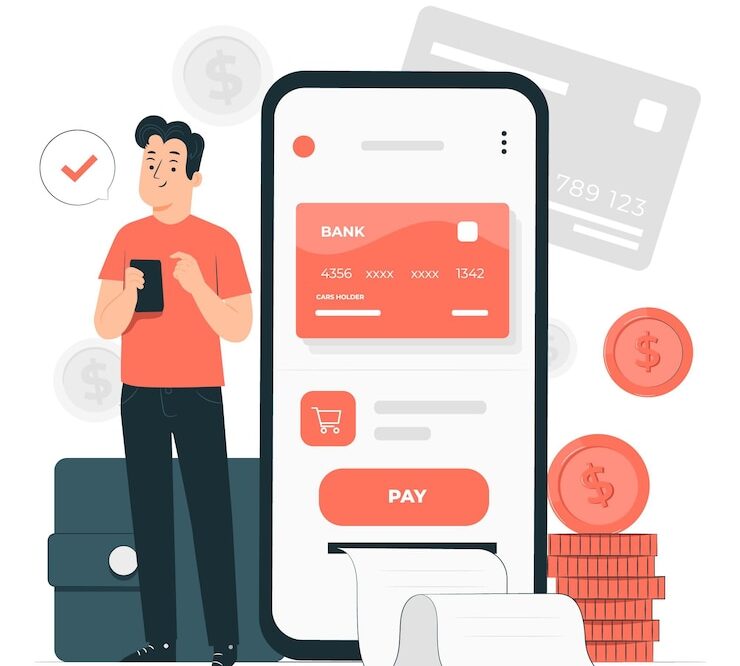Explaining Why Digital Banking is Secure
Today’s digital banking environment is based on security and convenience. User experience is everything for the new banking models. When it comes to money, clients want to ensure that their digital accounts are safe, and banks have the same goal. With the increasing risks of cybercrime, hackers are targeting digital banking players.
Naturally, if a person uses a standard password to access their banking account, it’s easy for a bad actor to compromise the data and steal the funds from that account. As a result, before setting up an account or accessing digital banking services, financial institutions must ensure multi-layer security and prevent financial crime.
This is where artificial intelligence comes into play. Behavioural analytics, identity verification, encryption, or multi-factor authentication illustrate the security capabilities in today’s banking scene. So the real question is – how does digital banking ensure security? Keep on reading the article to find out all about the different layers of defences in digital banking.
What is Electronic Banking?
Digital banking explains a new era of digitization, proving that automation of traditional banking services is here to stay. Online banking solutions allow customers to access their bank using a single app or a user-friendly platform. All you need is the internet, which means that customers are no longer obliged to visit a physical banking branch. Security specialists test every possible hacking scenario to prevent unwanted attacks.
Here’s a short list of the main benefits that made digital banking so successful:
- 24/7 availability to access your banking functions anywhere, anytime.
- Swift, automated payments where you can set up alerts as reminders to pay monthly bills.
- Zero-paper culture. Say “goodbye” to stacks of paper and endless piles of documents.
- Obviously, digital banking has contributed to online shopping, turning the e-commerce sector into a thriving success.
- Reduced risks and better monitoring. For example, AI-powered tools help digital banks spot and prevent fraud, such as fake identities, black money, counterfeit currency, and more.
Digital banks use the newest security innovations to guarantee users’ convenience without compromising security. That’s why electronic banks test every potential security breach variant. Nowadays, banks ensure that their security measures are complex enough, meaning that if one security layer fails, there are other layers to protect the data. Employed together, they leave zero chances for the hacker to succeed with their attack.
Ensured Security Without Friction
While customers expect proper security measures when using any digital banking service, they also prefer an easy, user-friendly interface. Today’s online banking consists of mobile apps and websites, which consumers use daily to check their bank accounts, transfer money, and so on. Even though we’re over the ATM stage of banking, the widespread use of technology has pushed banks to look for more robust digital security solutions.
But what happens when the banks focus on security and forget convenience?
Customers want to access their bank accounts as soon as possible. Let’s say that a consumer is asked to complete an identity verification procedure before accessing their digital bank account. If the process is complex, lengthy, and takes a lot of effort, the chances are that the customer will most likely exit the app and abandon the bank. For this reason, digital banking players today focus on ways to adapt and fill their customers’ needs.
As a solution to this challenge, some online banking platforms use biometric identity verification methods. These methods require customers to take a selfie once before, for example, creating a new digital banking account on their platform. The selfie gathers the user’s biometrics.
And you know what they say? You can forget your password, but you can’t forget your face. That’s why some banks choose to re-authenticate their users in a more user-friendly way these days. Specialists argue that this is the only way for a digital bank to remain ahead of the competition.
Secure Account Opening Using Apps
The global pandemic left its mark by changing the way we shop, do business, and, of course, use banking services. That’s why, to this day, many digital banking consumers prefer to use applications. That means all transactions and remote account openings need to be secured. To capture new clients, financial institutions search for new app designs and develop a security strategy to prevent cyberattacks.
Banks fight fraudulent online transactions by employing enhanced security features. This way, they strive to ensure that their customers stay loyal to their services and feel secure and confident enough to carry out their transactions.
Some of the most popular security measures in digital banking are:
- Two-factor authentication (2FA) – Typically, banks ask their customers to provide a PIN and a single-use code that is sent to their phones for extra safety. This method is used to identify real bank account holders.
- Encryption – Data encryption secures information in a way that nobody, except the customer and their bank, can access the banking services. While it’s easier for a hacker to guess credentials, encryption is a whole different story. Hackers can’t crack encrypted data easily.
- Automatic logout – Usually, banks allow their customers to log in to their digital bank account using a single window or one device at a time. Otherwise, if the system suspects a potential security threat and attempts to use the account on an unusual device, it’ll log the user out of the app automatically. The real account owner would have to access their account again.
The Latest Fraud Prevention Trends
With millions of users, the growing number of transactions puts pressure on banks to look for new ways to secure their data. Special policies and security protocols help banks to prevent fraud. Indeed, not only scammers and bad actors but also fraudsters and their smart techniques challenge digital banking institutions to turn to automated screening processes.
Detecting fraud using machine learning and artificial intelligence is now the go-to strategy for many financial institutions. This modern approach helps save time and costs. Compliance officers no longer need to review documents, as AI algorithms scan and detect inconsistencies and fraudulent patterns automatically.
For instance, we already discussed the need for customer identity verification in digital banking. But what about business verification? Banks can now use special Business Verification services to scan their vendors. That means they can check if the potential partner isn’t involved in any money laundering activities. As a result, banks avoid fines for non-compliance, ensuring that they stay clear of shell companies and shady partners.


















